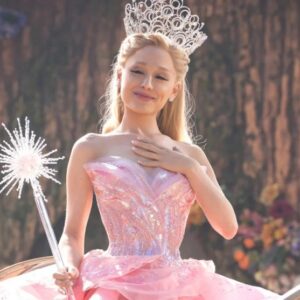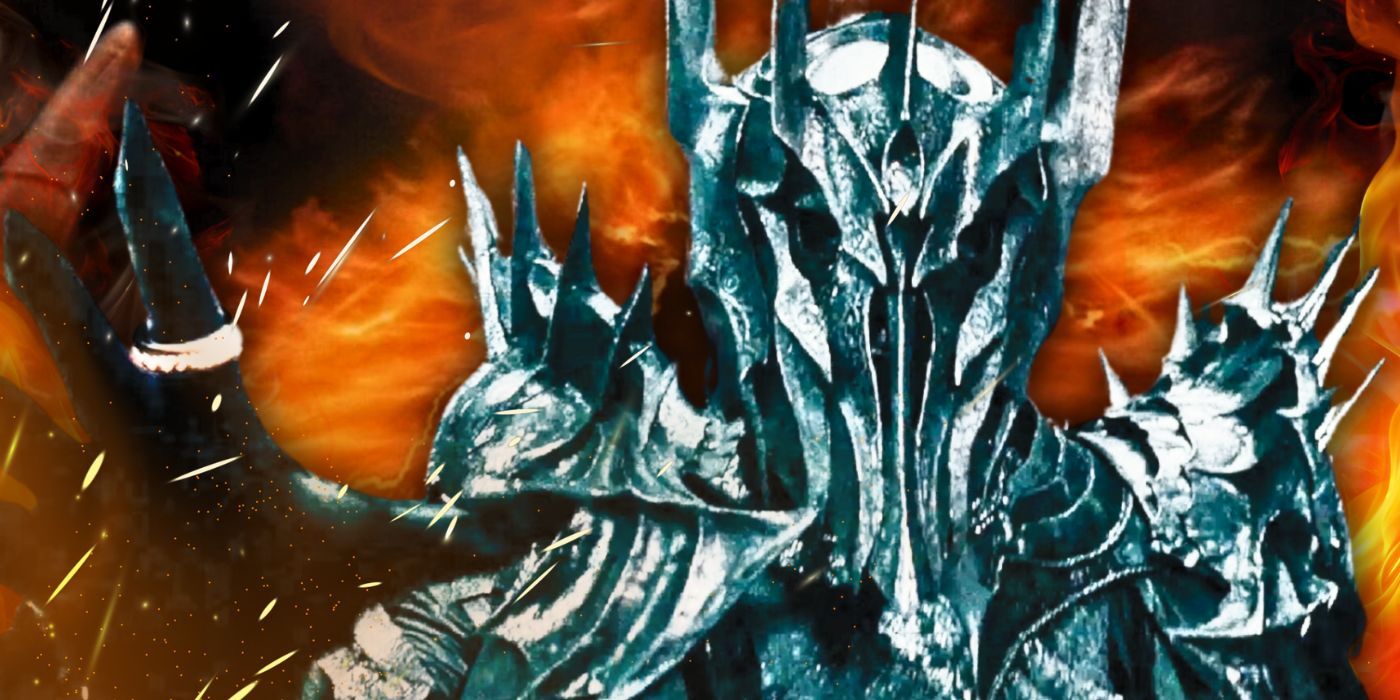
J.R.R. Tolkien’s epic trilogy culminates with the final defeat of Sauron at the end of Lord of the Rings: The Return of the King, but his defeat didn’t technically result in his death. The trilogy follows Frodo and Sam as they journey to Mt. Doom in Mordor, as that is the only way that the One Ring can be destroyed, and by extension, Sauron’s life force. Over thousands of years, the wholly evil Sauron has been defeated multiple times (like when his body was destroyed by Isildur at Mt. Doom), but has never been far beyond resurgence.
While The Return of the King showed very little of what happened after the Lord of the Rings trilogy, it’s made clear that Sauron’s defeat at the end of Frodo’s journey was different from his other defeats. In that final defeat, it became impossible for him to ever return, hence Gandalf leaving Middle Earth with his “task” done. However, Sauron did not technically die when the tower of Barad-dûr fell, even if he became unable to ever retake physical form or influence others.
Sauron Isn’t Technically Dead After Lord Of The Rings
He is reduced to almost nothing
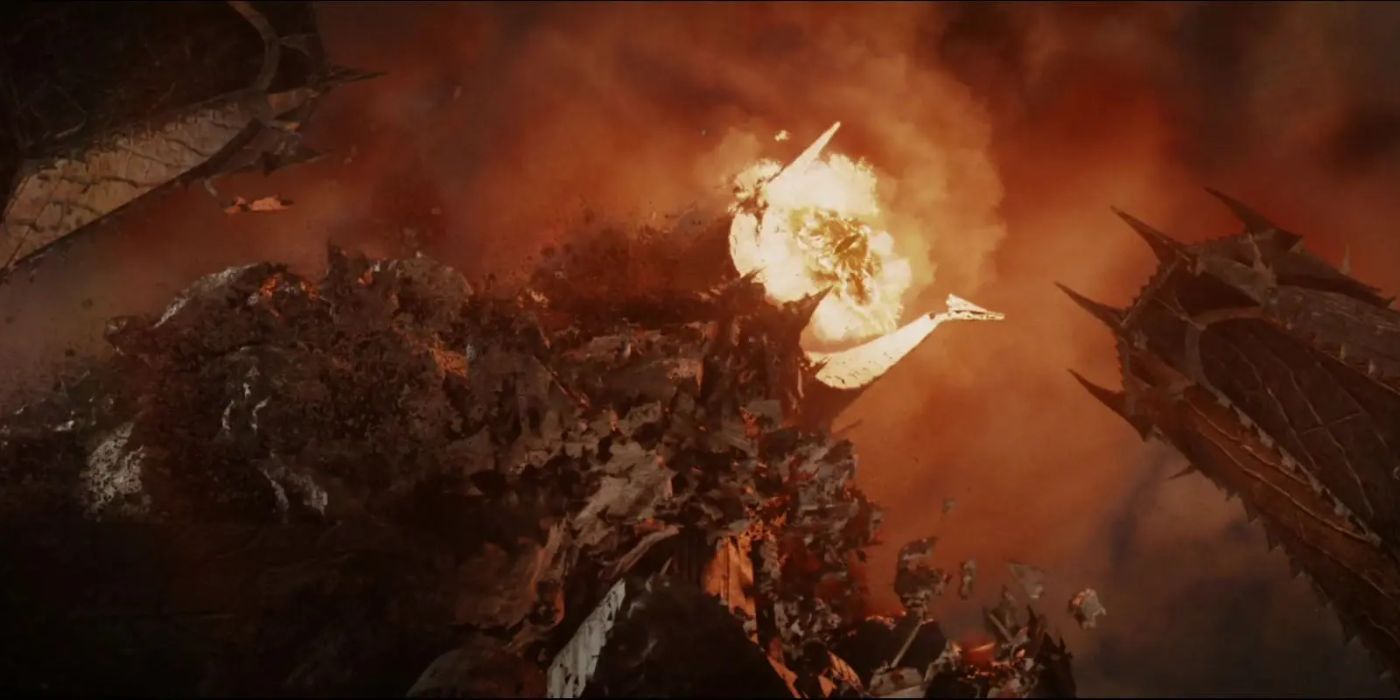
As depicted in Peter Jackson’s cinematic trilogy, when the One Ring was destroyed, the Eye of Sauron vanished in explosive fashion, destroying Barad-dûr and casuing the ground to swallow his armies in the process. Sauron was indeed reduced to virtually nothing, but as an immortal being, his spirit can never truly die. He is no longer visible, can no longer awaken evil, or take physical form, but the being Sauron does still exist in some form after the events of The Return of the King.
Primary Divine Beings of Arda (Tolkien’s Earth)
Classification
Named Examples
Eru Ilúvatar
The supreme deity of the universe
Valar
Melkor, Aulë, Manwë, Varda
Maiar
Olórin (Gandalf), Aiwendil (Radagast), Durin’s Bane, Mairon (Sauron), Curumo (Saruman)
Sauron is one of the Maiar, a group of immortal spirits who have existed since before the shaping of the world. In addition to Sauron, there are a number of other named Maiar in the greater Tolkien works; the five Wizards, including Gandalf, are Maiar, as well as Durin’s Bane, the Balrog that Gandalf battles in Khazad-dûm. The Maiar were created to help the Valar, the godlike deities of the world, shape the Earth. Some of the Maiar, like Sauron, were corrupted by Melkor (AKA Morgoth), a rebel Vala and the first Dark Lord. Given his divine origin, Sauron can never truly die, even if he is reduced to virtually nothing.
Why Sauron Can’t Ever Return (Despite Not Dying)
His fate was tied to the One Ring
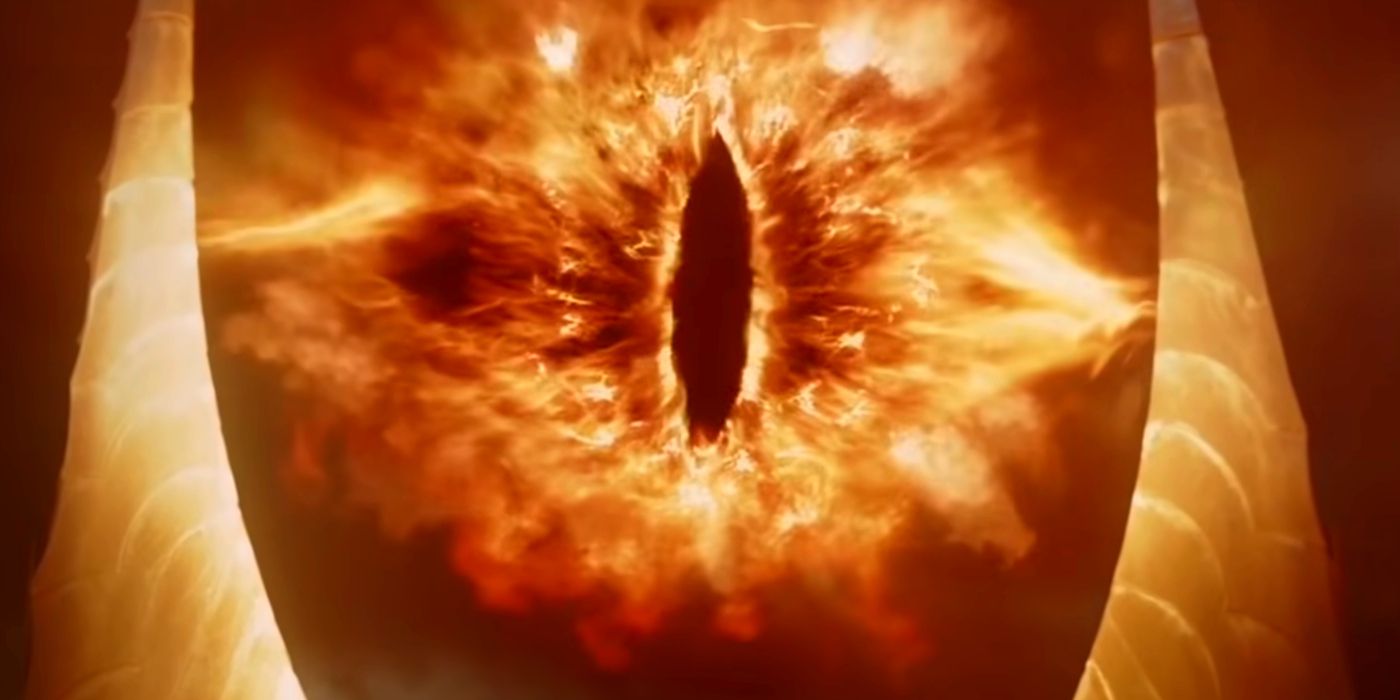
Sauron’s spirit still endured in some form after The Return of the King, but he can never again take a physical form like the shadowy Necromancer, or even a non-physical form like the Eye of Sauron. Thousands of years before Bilbo happened upon it in Gollum’s cave, Sauron poured all of his strength and power into the One Ring, including most of his spirit with it. By doing so, he enhanced his own power, and therefore could corrupt and control those who bore the other Rings of Power, as happened with the Nazgûl.
When the One Ring was destroyed, there was so very little left of Sauron that it became impossible for him to ever take on a new form or use his spirit to stir evil in the world, as he had done so many times before. His life force was completely diminished, leaving virtually no trace of him in the world, save for the faintest existence due to his immortality. However, in the far future of Middle-Earth, Sauron could potentially have been reborn once more.
One Abandoned Tolkien Story Could Have Brought Back Sauron
The epic Dagor Dagorath provides a possibility
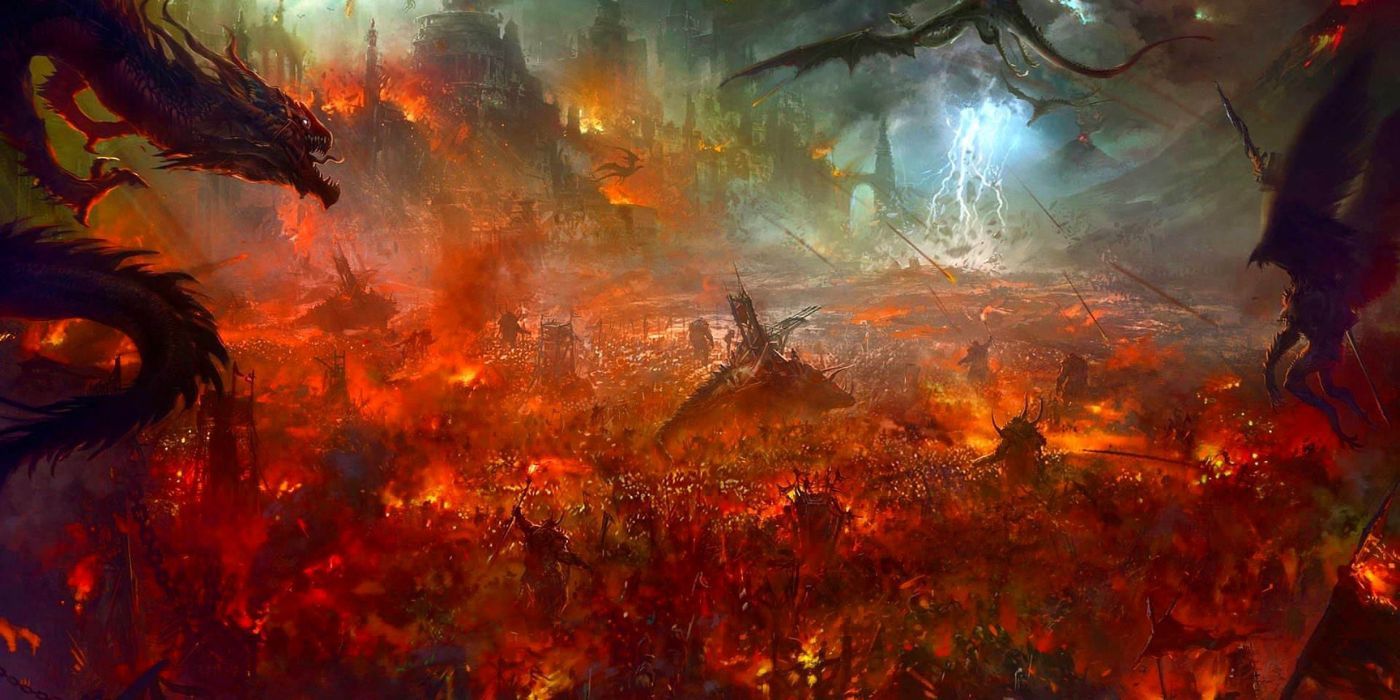
At different points in his collected works, specifically in The Silmarillion, Tolkien references the Dagor Dagorath, which is referred to as “The End.” The Dagor Dagorath is said to be a great battle between good and evil that comes to pass at the end of the world. Drawn from the Norse Ragnarök and Biblical Armageddon, the Dagor Dagorath would see Melkor return from his eternal imprisonment and lead the forces of evil in an all-encompassing battle against the Valar, which would come “when the world is old.”
Christopher Tolkien, J.R.R. Tolkien’s son and a professional academic editor, originally chose not to include the prophecy detailing the Dagor Dagorath from his father’s 1937 manuscript of the Quenta Silmarillion , a collection of legends that stood unfinished at the time of J.R.R. Tolkien’s death.
In this final battle, it’s possible that Sauron could return once more to fight alongside Melkor against the Valar. If the original Dark Lord himself could return and wield a power terrible enough to cause the breaking of the world, it stands to reason that he would be able to resurrect his most powerful allies, most certainly including Sauron himself. While the Dagor Dagorath was never comprehensively described or fleshed out into a full legend, it could be a vital way for Sauron to return after his final defeat in The Lord of the Rings: The Return of the King.


